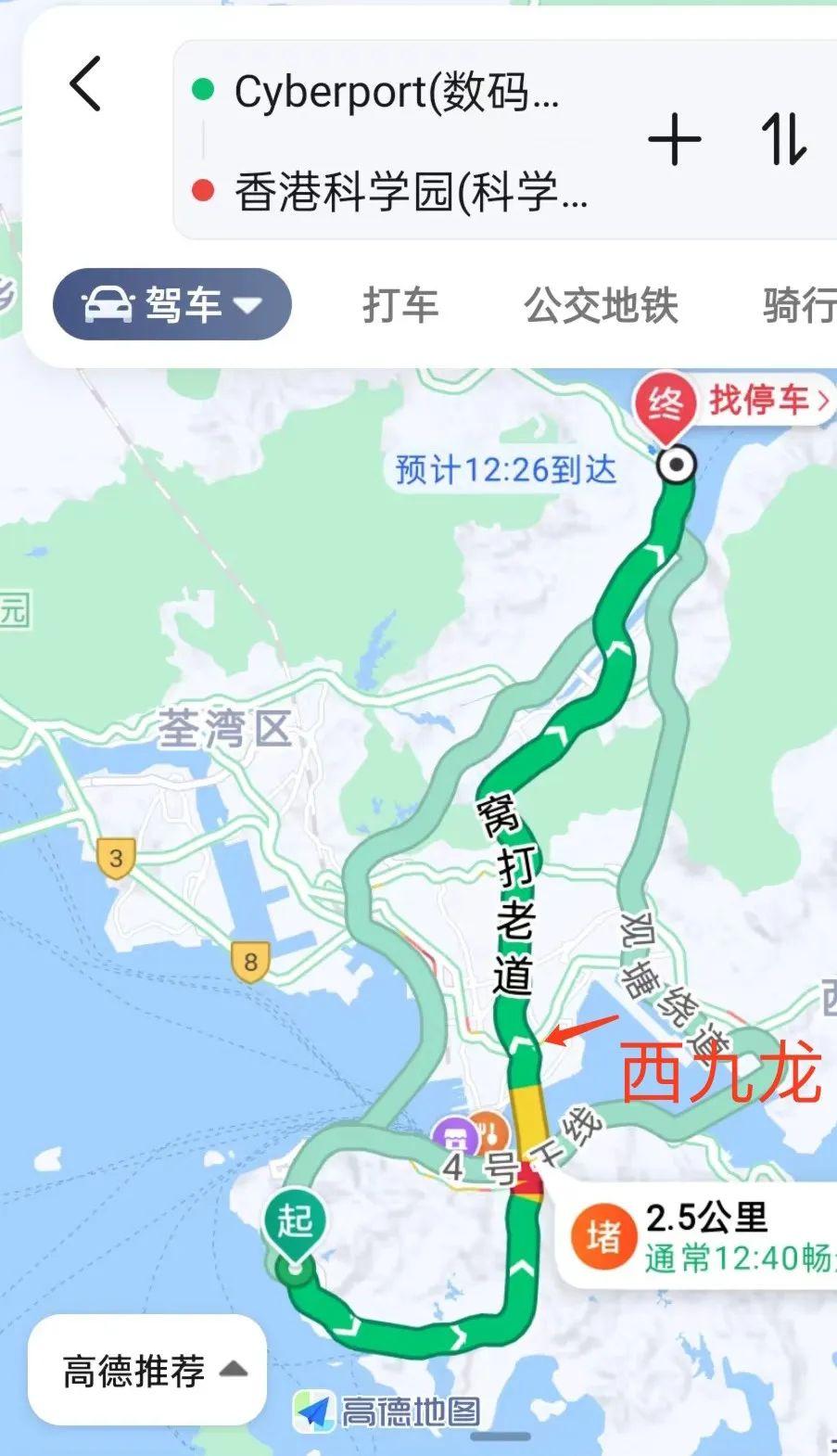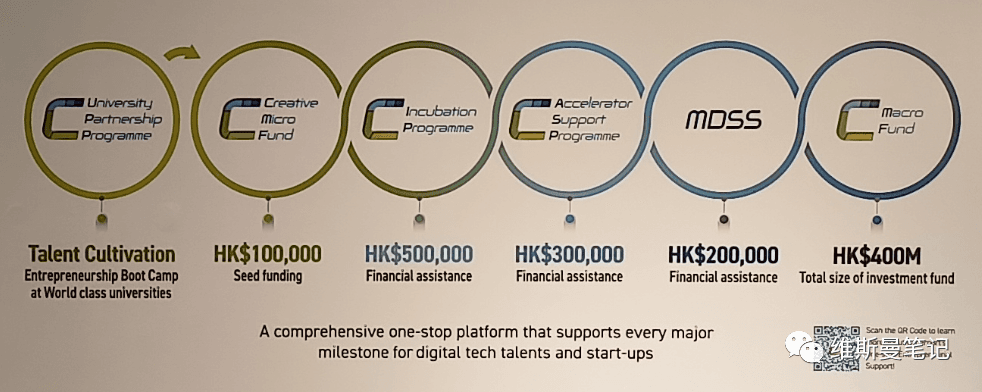Author's Note
Due to business reasons, I have recently been in frequent contact with Hong Kong and have personally visited two major Web3 hubs supported by government policies: Cyberport and Science Park. The geographical locations, support policies, and preferences for applying companies in these two parks are different. Therefore, this article combines the information I have personally gathered to provide a detailed summary. However, there may still be omissions, so it is best for everyone to visit and investigate in person.
In addition, I would like to add that I don't like to include illustrations in my articles. The main reason is that the initial publication of the article is on a public platform, and if images are uploaded, Mirror and xlog will not be able to access them (the public platform restricts accessing images from external links), which would require re-editing. So unless it is an important explanatory image, I will not include illustrations.
Furthermore, due to the large amount of information in this article, the content may appear somewhat disorganized. I hope you can understand.
Main Text
Currently, I know of two parks that have Web3 support policies, namely Cyberport and Science Park. Cyberport is located in the westernmost part of Hong Kong, quite far from mainland China. Science Park is located in the northern part of Hong Kong, next to the Chinese University of Hong Kong, and is much closer to mainland China. If you drive from Shenzhen to Hong Kong, Science Park will be closer, while Cyberport is very far. However, if you arrive by high-speed rail at West Kowloon, Cyberport will be closer, about 9 kilometers away, while Science Park will be further away, about 18 kilometers.

The starting point in the lower left corner is Cyberport, and the endpoint in the lower right corner is Science Park. There is a distance of 30 kilometers between the two, and the red arrow in the middle represents West Kowloon Station. Note that neither Science Park nor Cyberport currently have subway access, so you will generally need to transfer from the subway to a minibus, or take a minibus for the entire journey.
//Web3 Support and Occupancy at Cyberport
First, let me explain the situation at Cyberport in detail.
Currently, more than 1900 companies have completed their occupancy at Cyberport, including well-known unicorn companies such as Animoca Brands, HashKey Group, and ZA Bank. Cyberport has a very large space and operates similar to shared offices like WeWork, but there are not many remaining workstations. Most of the positions have already been rented out, but there are no workstations available.
//Web3 Special Support Policies#
What most people are concerned about is the support policies. Let's start with a direct image.

As shown in the image, different special subsidies can be obtained based on the different stages of the project. The image is a broad conceptual diagram, and I will provide detailed explanations of the details.
First, let's talk about the second circle on the left, which represents seed funding of HKD 100,000. There are no requirements for the stage of the project, even if it is just an idea, you can apply. There are approximately 1-2 application opportunities per year, and even if you apply, it is not guaranteed that you will receive the funding. You need to have a complete project plan, market plan, etc., similar to a project interview, and stand out among all the projects that have applied.
The funds represented by three, four, and five in the image are more like special subsidies. For example, if your project has reached a certain stage of development and you need to quickly expand the market, you can apply for these subsidies. Similarly, there will be dedicated personnel to evaluate and interview your project.
The total amount of support funds for these stages is HKD 1.1 million. With this portion of funding, you do not need to give up equity.
The HKD 400 million in government funds on the far right is the support fund for the entire Web3 industry in Hong Kong. Only unicorn companies selected in Cyberport can receive this fund. The amount of this fund is HKD 20 million, and it requires a minimum of 10% equity stake by the government. It is worth noting that the equity stake here refers to the government's stake.
//Web3 Talent Subsidy Policies
This mainly applies to local talent in Hong Kong. If your project hires local talent in Hong Kong, you will receive talent subsidies from the government. For example, for hiring a Hong Kong PhD, you can receive a subsidy of HKD 32,000 per month; for hiring a Hong Kong Master's degree holder, the subsidy is HKD 20,000 per month, and for hiring a Hong Kong Bachelor's degree holder, the subsidy is HKD 18,000 per month. These subsidies are given to the company to reduce the cost of hiring in Hong Kong.
In addition, Hong Kong has also opened two pathways for talent introduction, namely the Talent Admission Scheme and the Quality Migrant Admission Scheme. The Quality Migrant Admission Scheme is self-explanatory, as long as you meet the requirements and are outstanding enough, you can go through this scheme. However, if your academic qualifications and experience are not outstanding, you can go through the Talent Admission Scheme by being sponsored by a Web3 company in Cyberport.
The Talent Admission Scheme means that if a specific company (such as a Web3 company in Cyberport) is willing to provide sponsorship, talent can be introduced in the form of a work visa. After seven years of work visa, permanent residency in Hong Kong can be obtained. However, the sponsoring company must meet the corresponding annual tax threshold, which means that your Web3 project must be online, have legal and compliant profits, and pay taxes in order to apply for talent introduction through sponsorship. Shell companies or companies trying to evade taxes through cryptocurrency will not be able to meet the requirements.
On the other hand, personnel introduced through the Quality Migrant Admission Scheme can change companies freely within seven years. However, personnel introduced through the Talent Admission Scheme cannot change companies within seven years, which means they cannot switch jobs or change company entities.
//Cyberport Entry Costs and Requirements#
- Entry Costs
The entry costs at Cyberport are very low, even lower than in Beijing, Shanghai, Guangzhou, and Shenzhen. First, to apply for entry, you only need to have a complete Hong Kong entity company, a Hong Kong corporate bank account, and a project plan. There are no requirements for the project stage, even if it is just an idea, you can apply for entry.
There are three types of entry: hot desks, fixed desks, and offices. The prices for hot desks and fixed desks are both HKD 1,980 per month. The main difference is that hot desks cannot provide address proof, which means you cannot register a Hong Kong company under the name of Cyberport, so it is only suitable for projects that already have a company elsewhere in Hong Kong. Fixed desks, on the other hand, can register the location of Cyberport as a Hong Kong company without the need to find another registration point.
The price of offices varies depending on the size and does not have a unified price, but it is generally around HKD 2,000 per workstation. However, all the offices at Cyberport are currently fully occupied.
As a price comparison, the lowest price for a workstation in WeWork in China is CNY 1,800, and the price for an office workstation ranges from CNY 2,500 to CNY 3,500. Some prime locations in WeWork may be even more expensive.
- Application Rules
The application rules at Cyberport are relatively simple. I will list them in the form of an unordered list.
- You need to lease at least one workstation to apply.
- Rent is paid monthly, and no deposit is required.
- Project staff do not need to work in the office, but there are attendance requirements.
- Workstations have attendance requirements, with a minimum of 30% attendance, which means you just need to clock in.
- Complete project plans and application forms are required, and there will be dedicated personnel to follow up and review, similar to an interview.
//Additional Information about Cyberport#
The core information has already been covered. Here are some additional points that I personally consider important.
-
Most of the companies that have already occupied Cyberport do not have employees working in the office, and both workstations and offices are empty but have already been rented out. However, Web3 companies are more likely to have distributed offices or offices in mainland China.
-
Cyberport has attendance requirements, with a threshold of at least 30%. However, it is not clear whether this 30% refers to 30% per week or 30% per year. Attendance is recorded based on entry and exit records, so you need to arrange personnel to clock in in Hong Kong. However, there is no requirement to work in the office; you can clock in and leave.
-
Commuting to Cyberport is not convenient; there is currently no subway access. If you depart from West Kowloon, it takes about 50 minutes for public transportation. Taking a taxi takes about 30 minutes. The taxi fare ranges from HKD 180 to HKD 250, depending on whether you pass through a tunnel and whether it is during peak hours.
-
Cyberport is located by the sea, surrounded by sea view properties, which has led to extremely high rental prices in the area. The rental price for a single room is around HKD 10,000 to HKD 20,000 per month, and renting an entire apartment in the area costs between HKD 100,000 and HKD 200,000. The large price difference is due to the properties in the area, with the cheapest neighborhood near Cyberport costing around HKD 17 million, while the most expensive one costs HKD 268 million. Here are some pictures for your reference.

//Web3 Support Policies at Science Park
Due to the distance and time constraints, I have not conducted an on-site investigation at Science Park. However, the information mentioned here is obtained directly from officials at InvestHK. I will provide detailed information when I visit in the future.
First, let me set the tone for Science Park. Science Park is more inclined towards large-scale, technology-oriented, and research and development projects. It has higher requirements for the stage of project development, and its support policies are not limited to Web3; other high-tech areas such as artificial intelligence, metaverse, VR/AR, etc., can also apply for entry. Most of the existing projects are not as financialized, but more focused on public chains, protocols, and projects with actual products. There are few projects that focus on NFTs, concepts, or tokenization in Science Park, but it doesn't mean there are none.
//Web3 Special Support Policies#
First, let's categorize the support into three types based on the level of support:
-
idear Program: It provides an incentive of HKD 100,000, but there are specific requirements for the project's progress. It is only available for projects that are close to launching, and it requires a recommendation from a local investor. The idear Program is held every year.
-
Incubator Program: Similar to the HKD 1.1 million incentive program at Cyberport, Science Park offers an incentive of HKD 1.39 million.
-
Accelerator Program: Similar to the government funding program at Cyberport, but the maximum funding is only HKD 4.8 million, and the government's equity stake will be lower than at Cyberport.
//Web3 Talent Subsidy Policies#
These are basically the same as at Cyberport, so I won't repeat them. The difference is that Science Park also has a research and development talent pool to recommend to you. The talent in this pool is at the doctoral level and can also enjoy the HKD 32,000 per month subsidy mentioned earlier. The talent receiving the subsidy must work locally in Hong Kong.
//Science Park Entry Costs and Requirements
The entry method at Science Park is different from Cyberport. Science Park does not offer entry based on workstations but based on office space rental. The known rental price is approximately HKD 30-32 per square foot, and 1 square meter is approximately equal to 9 square feet.
Now, here comes the key point, which is also the biggest difference from Cyberport.
-
Science Park requires that more than half of the R&D positions in the occupying company work in Science Park, and the project application review will emphasize the requirement for technology-oriented and research and development projects. When determining whether it is an R&D position, the company will be required to submit employee resumes for review.
-
When applying to Science Park, proof of the company's technological expertise is also required.
-
When applying to Science Park, a complete technological research and development plan, incubation plan, and operation plan are also required.
-
When applying to Science Park, in addition to submitting documents, there will also be interviews for the company and the project.
//Additional Comparison between Cyberport and Science Park#
In summary, Cyberport is more inclined towards small and micro-enterprise projects and does not have many requirements for the nature of the projects. Marketing projects and conceptual projects are all acceptable at the moment, as long as they are legal and compliant. On the other hand, Science Park is more inclined towards large-scale projects, focusing on research and development and technology, such as developing public chains and metaverses. The scrutiny of projects is also greater at Science Park.
At the same time, Cyberport has very relaxed requirements for personnel, as long as the attendance rate is met, there is no requirement to work in the office. Science Park, on the other hand, requires at least half of the R&D personnel to work in the office. This indirectly increases the company's labor costs.
In addition, I have seen people in the industry organizing trips to Hong Kong for investigation and charging high fees. However, in reality, it is not necessary to pay for a visit to Science Park or Cyberport, and even visiting InvestHK does not require payment. You just need to contact the staff and make an appointment in advance.
Finally, I welcome everyone to discuss Web3 in Hong Kong, and I will frequently visit both Hong Kong and Shenzhen in the future.
Author: Liu Ye Jing Hong
WeChat Official Account: Wesman Notes
Personal WeChat ID: liuyejinghong_
RSS3 Personal Homepage: liuye.rss3.bio
xlog Homepage: liuyejinghong.xlog.app
Mirror: mirror.xyz/liuyejinghong.eth